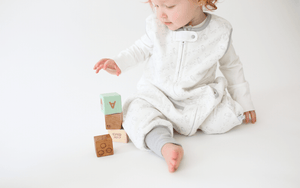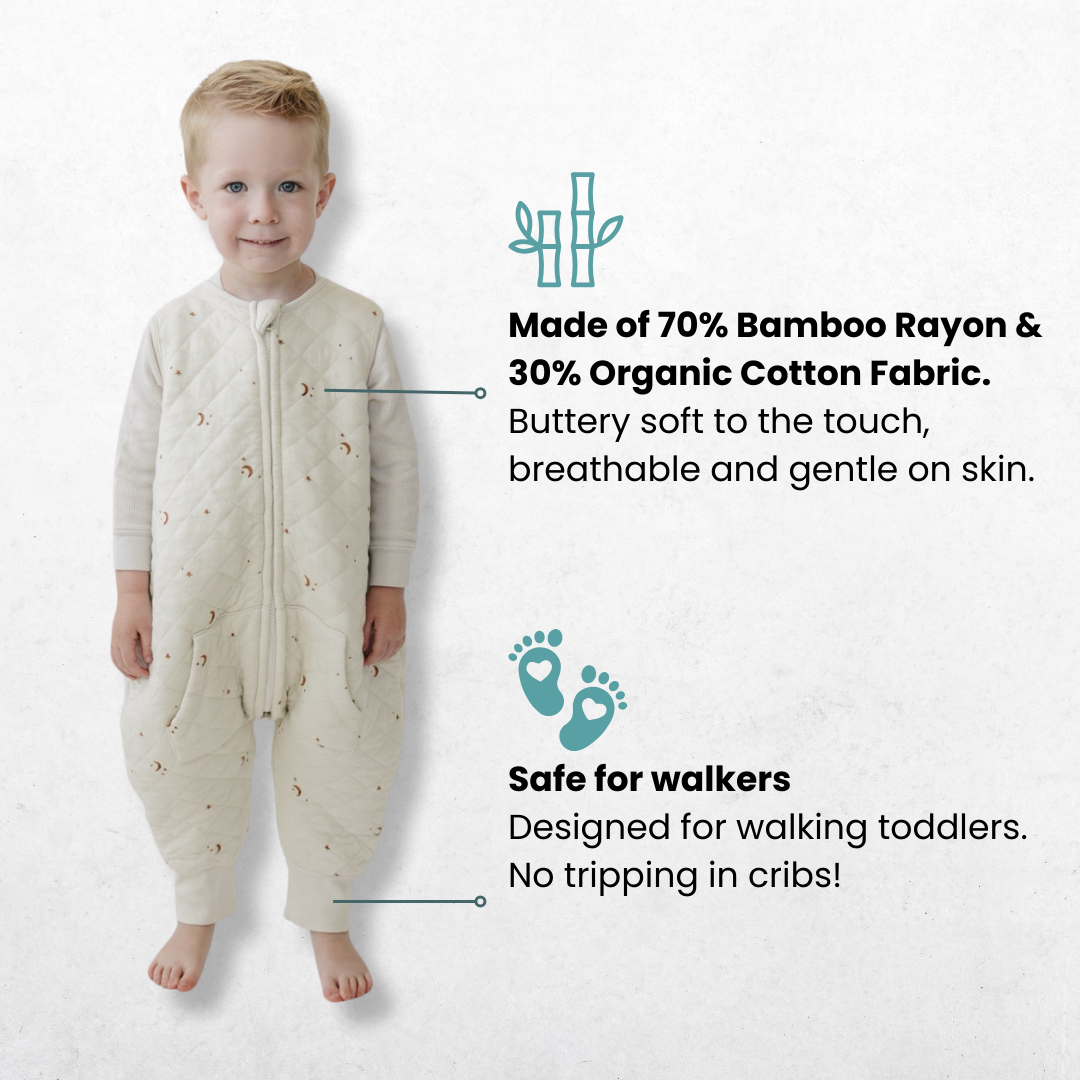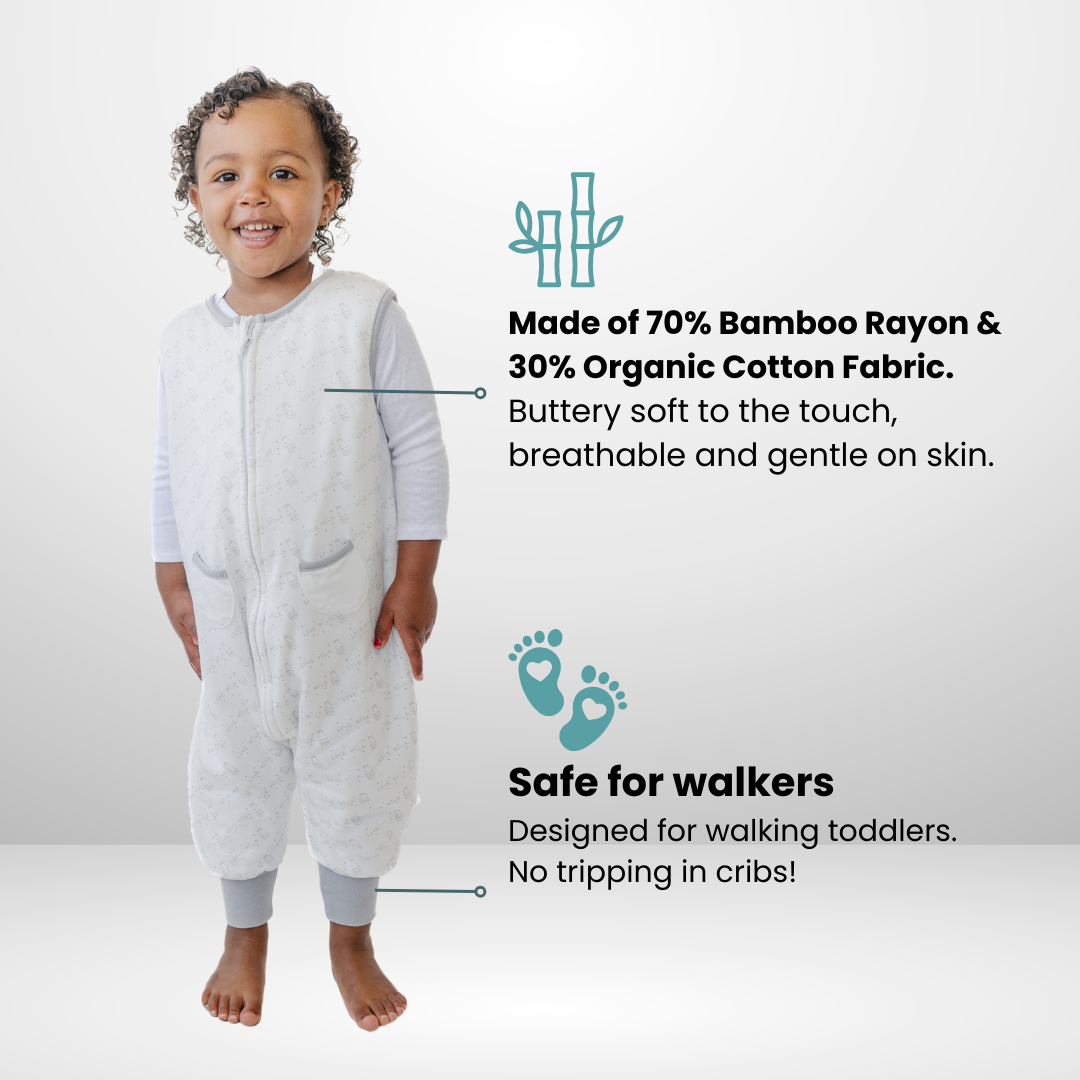PLANNING AND PREPARING: TEACH YOUR CHILDREN STRONG SLEEP HABITS
By: Meredith Brough, from Sweet Slumber

Is your preschooler struggling to sleep well? Waiting for your child to sleep through the night at this age is no picnic!
Let’s put that sleep deprivation behind you!
When it comes to building sleep habits, there are some strong advantages, but also disadvantages, when working with children two years or older. It can be simpler to teach them new skills and they may learn quickly. The process can be much smoother. But, children are also more aware of change, better at expressing how they feel and what they want and may become stressed out easily.
There can also be challenging behaviors to manage. Generally speaking, young children do NOT enjoy having their routines mixed up or new methods introduced to teach them to fall asleep on their own. Subtle, gradual changes work best.
One more issue that parents should understand, is that young children continue to experience developmental leaps every few months as they grow up. These periods of mental and physical development can cause sleep disruptions, boundary testing, moodiness, clinginess and bedtime/naptime battles.
Children are often unable to control how they are feeling and acting during developmental changes. They fight their sleep and struggle because they feel wired and overstimulated. It's uncomfortable for them and exhausting for parents!
During these times, most parents surrender to bed sharing or room sharing after expending every bit of their energy into daily power struggles. At your breaking point, it may be tempting to overhaul EVERYTHING to do with your child’s sleep. But, a developmental leap period is probably the wrong time to tackle sleep hurdles. Working to change sleep habits during a mental leap would be like trying to do all of your holiday shopping at an empty store, the day before Christmas. You might spend all of your time, energy and resources trying to change the circumstances, and then wind up feeling depressed about it. It will bring you frustration to walk away empty handed. The better way to go would be to plan and prepare ahead, take advantage of optimal timing and make life as comfortable as possible during the demanding times. You are more likely to reach your goals, and have a smoother experience going about it this way.

Here is a checklist to determine if now is the right time to teach your child new sleep habits, so you feel reassured and empowered to move forward.
Is your child...
- Picking up new words and/or advancing in language skills?
- Learning new abilities in other areas?
- Having frequent tantrums or meltdowns?
- Testing boundaries?
- Wide awake at nap time, bedtime or at night, fighting sleep, waking more often in the night or waking early in the morning?
- Acting more emotional or seeking extra comfort from you?
If you can answer “yes” to 2-3 or more of these questions, your child is probably in a developmental leap. Wait until the signs fade. When your child slows down in mental progress, acts less emotional, and sleep is almost back to normal (after 4-5 weeks), then go ahead and work to improve your child’s sleep habits.
Keep in mind that teething can cause similar challenges, so it may be better to wait for your child’s teeth to cut, as well.
Getting Started: Learning Your Child’s Sleep Cues
The first important step is to spend a few days observing your child’s sleep cues. Ask yourself these questions: What are my child’s sleep cues? What time do they begin? How many minutes do I wait to respond to these cues before beginning the routine? How many minutes does it take my child to fall asleep once I begin the routine? What kind of behaviors do I see in my child, before and during the routine?
These questions matter.
Did you know that there are three distinct levels of sleep cues? The early signs are important to catch because they warn you that your child is getting tired. For babies, this is probably when the routine should begin. Toddlers and small children usually have a longer sleep window, so the first signs of tiredness will help you know it is time to prepare yourselves for the routine.
Level 1 Sleep Cues:Slowing down, staring, looking tired, and the appearance of pink around the eyes and eyebrows. For very active children, you might see level 2 sleep cues for just a few minutes without any warning, because they have a short sleep window. Writing down your child’s patterns, behaviors and their timing will help you reveal the perfect bedtime. Sometimes children need their routine to start before the sleep cues appear.
For typical children, sleep cues become stronger and more frequent as time passes.
Level 2 Sleep Cues:Yawning, eye rubbing, lying down, and snuggling. You might notice that your child seeks out a comfort object, stops listening to you, becomes clumsy and loses focus. Some of these behaviors may seem very normal and can be easy to overlook near nap time or at the end of the day (when you are tired, too!).
To illustrate the subtlety of sleep cues, I will share an example. Two-year-old Andrew was playing with his toys about a half an hour before bedtime. I was distracting his parents in conversation, so the time got away from us. After a few minutes, I noticed that Andrew’s voice grew higher in pitch while interacting with us (the beginning of a whine) and then he ignored his parents when they spoke to him. Five minutes passed and Andrew started throwing toys across the room and then he began hitting his mother. He told her “no!” when she asked him to clean up and get ready for bed.
I asked his parents if they noticed what his first sleep cues were. At this time, he was rubbing his eyes and squinting. They answered that he had been yawning for about 10 minutes or so. To their surprise, Andrew’s parents learned that his first signs of tiredness were when his voice got higher in pitch and he was ignoring them, long before the yawning started. This was when the bedtime routine should have started.
There are cues that should rarely happen — level 3 cues. These late cues mean children are overtired and may miss their sleep window.
Level 3 Sleep Cues:Sudden bursts of energy, screaming, throwing tantrums, arching backwards and acting defiant. Some children reach level 3 cues on a daily basis. The problem with this is that it is a lot harder for them to fall asleep when they are overtired. They feel restless and their bodies produce cortisol and adrenaline — making it harder to relax. The hormones build up more energy, which makes them feel wide awake. It can take an hour to an hour and a half to get tired again. Children don't sleep well when they miss their ideal sleep window, either. This is true for naps and nighttime sleep. Overtiredness can be a hard cycle to stop if your child is constantly missing their sleep window.
Be sure to observe your child for several days and experiment with the timing of bedtime (and naps). Your start time could be too late by an hour or more. Or, it could be off by 5, 10 or 15 minutes. If adjustments need to be made, it will be worth all of your effort!
Optimizing Your Bedtime Routines
Children who are full of energy at bedtime will respond well to low lighting and soft music for an hour or so before bedtime. It is important to keep your child’s activities as slow moving as possible and eliminate excitement before the routine begins. Children have an endless supply of energy, so it’s best to offer them lots of exercise and fresh air throughout the day to wear them out. Avoid exposure to the television, tablets, and phones for 30-60 minutes before beginning the routine. Remove white, yellow, or LED nightlights that trigger the brain to be awake from your child’s room and replace them with salt lamps, which give off a soft glow like moonlight.
Take advantage of natural elements that help children fall asleep quickly and deeply. Keep the routine close to the same time each night (within 30 minutes). The circadian rhythm and melatonin will regulate your child’s body. Melatonin is released and broken down when children’s bodies need to fall asleep, and the timing is not always convenient for parents. On average, this occurs between 7 and 8:30 p.m. for young children. (Going outside in the morning for 10-20 minutes can make this natural process more effective).
Follow the same order of activities in your routine, every day. Each step will trigger the brain to prepare for sleep. Have you ever seen a child yawn on the way to their bedroom or bathroom at night? This is a sign of consistency on the parent’s part. When mapping out your routine, remember that the activities aren’t as important as the pace. Slow your child down so that tiredness can set in, and then add meaningful opportunities for bonding. It can be helpful to make a picture chart to hang on the wall or create a flip chart that your child can handle, to eliminate your child’s objections and excuses. Here is an example of a simple routine: go potty, take a bath, brush teeth, put on pajamas, have playtime for a few minutes on the floor or bed, read 2 books, sing 2 songs, say prayers and lights out.
Keeping the routine at the same time and in the same order will still leave room for you to be flexible when your child needs extra wind-down time. Some children aren’t ready to fall asleep at the same time every night. When it’s “one of those nights,” offer your child choices of longer songs and/or books. You may want to read 3-5 books if your child takes longer to wind down on a regular basis. Offer the choice of short books on sleepy nights. Ask your child to lie down for the last book.
Winding Down and Falling Asleep
One of the most important steps of gentle sleep training is teaching your child to fall asleep independently for naps and bedtime. This skill will empower him or her to connect sleep cycles throughout the night. The length of night sleep should extend naturally this way.
Most children fall asleep snuggling or laying down next to their parents. This is okay! Some children will not lie still or settle down unless their parents are next to them. Another habit that parents worry about is rocking children to sleep, while they are small. Many children need motion or physical closeness to relax and surrender to sleep. You do not have to eliminate this part of your routine. Take your time shortening this part of the process so that it is only a few minutes long (it can still be 5-10 minutes long if that means your child has some time to fall asleep afterward). If your child depends on your touch (cuddling or patting, etc.), then you will have to speak to your child ahead of time and let them know that you are going to be doing this for a shorter period at bedtime. It may help to use reward charts or offer extra cuddle time during the day.
Relevant Read:
You should move slowly when making changes to this part of the routine. Let your child do what is comfortable and familiar for most of it, and change a short part of it. This could be at the beginning of quiet time when you usually snuggle or at the end before falling asleep. Either way, your child should be able to ease into something new and phase out the old. You can even make changes for 1 minute increments. For example, if your child is used to laying down with you for 20 minutes, then for the first minute of the routine, sit next to them for 1 minute, and then lie down. If you continue building this time at just 1 minute per day, eventually you are going to sit there long enough for your child to fall asleep.
If you do it in the reverse order, it may work better for children who cannot sit still unless you snuggle them in the beginning. If your child is too awake or restless, go ahead and pat/rub your child until they fall asleep while you sit next to them. The next goals can be to pat/rub less of the time (intermittently) and build independence.
Let your child know that you need to step out of the room quickly to grab something, after staying with him/her for several minutes. Exit quickly and return right away. Leave like this consistently and extend the time slowly. Build it up to 15 seconds away, then 30 seconds and so forth. Your child will learn to trust you and wait for you to come back. Your child will eventually fall asleep waiting for you to come back. After this happens a few times, you can leave sooner. It is always good to spend 5-10 minutes with your child before leaving them to fall asleep. If your child calls you, continue to build trust by responding and add extra check-ins, at times.
You may need an even slower option to teach independence at bedtime and naps. Your child may need you to be more subtle. Use a chair to sit near your child. Move the chair 6 or so inches towards the door, from day to day. Eventually your child will fall asleep when your chair is at the doorway. The next day, you will move the chair around the corner and respond using your voice or appearing when you are called. Checking in on your child when you aren’t called may help to cement trust and reassurance. Do this as long as you need to.
Sleeping Through the Night
Even though your child is learning to fall asleep unassisted and will be connecting sleep cycles without your help soon, there may be times when your child has night awakenings and wants companionship. It should be really effective to respond to your child and leave the room like you do at bedtime. When you interact with your child, remember to be boring, firm in giving commands, and offer a hug and kiss for comfort, but do not make it a fun and lively experience. If your child gets out of bed and comes to you, walk your child back to bed. If you need to, spend a weekend taking turns with your partner and walk your child back every single time they come to your room. It shouldn’t take long to get your child to stay in bed, if you are consistent.
It’s possible that your child will need one more measure of comfort and security to complete your sleep goals and create permanent sleep habits. If your child continues to wake often and craves comfort even though there is a soft glowing night light in the room and you have taught your child to fall asleep alone, then you may need to teach more trust and security. Spend a lot of time playing with your child in his or her room during the day and evening. Give your child alone time in there for very short periods and be responsive. Make the room a happy, pleasant place. This will create a feeling of security and familiarity that will help your child sleep better at night and keep the new sleep habits in place.
Enjoy the Outcome
Following these simple steps will create strong, lasting sleep habits that will set your child up for success in development, moods, study habits in school, behavior and emotional and physical health. Your work will pay off for your child, and your life will be more enjoyable, rewarding and relaxing, too.






















